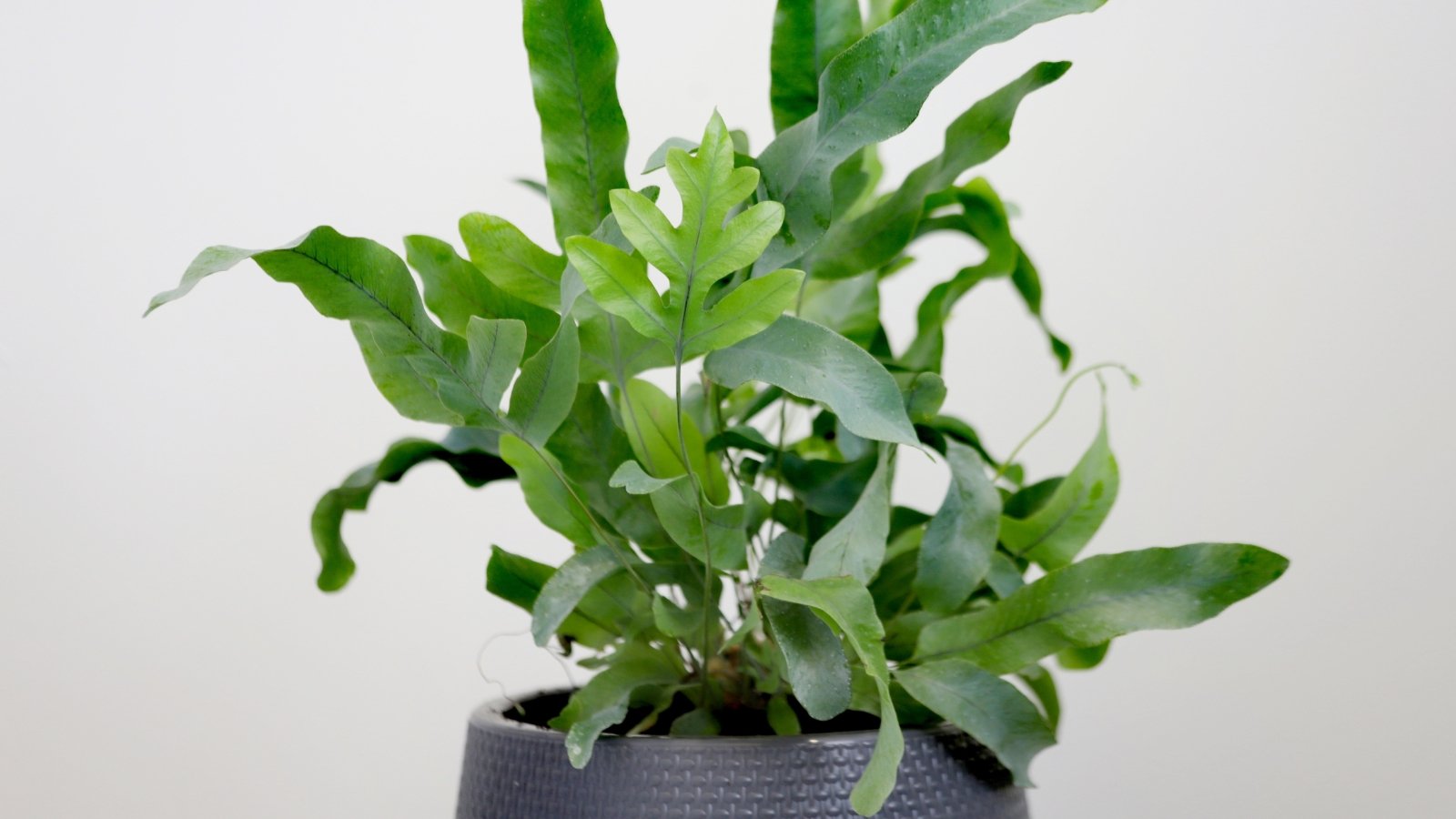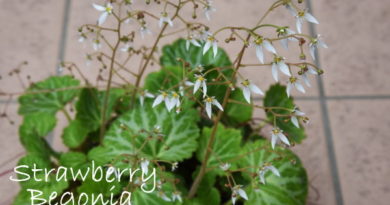17 Houseplants That Don’t Mind Dry Air
Depending on your climate, it can be challenging to provide enough humidity for many of your favorite houseplants. Many of the plants we grow indoors are native to tropical areas, where the humidity is high all year. To support these in a drier climate, you might find yourself bending over backward to provide enough moisture.
The average humidity level inside a home varies. I’m a Florida resident, so it’s commonly between 40-50% inside my house. This is on the high end, and in drier climates you may find your home is closer to 30%. That’s not enough to support plants like orchids, prayer plants, begonias, and many ferns.
If you struggle with dry air in your home, quite a few options will thrive in your environment. Even though some of them may be native to tropical environments, many are flexible in this way. You just need to know which ones to bring home and which ones to leave at the nursery. Here are 17 plants that don’t mind dry air for your home.
Snake Plant ‘Moonshine’


Sansevierias are versatile and easygoing, which makes them highly popular. They are native to tropical and subtropical areas in West Africa, but they adapt well to indoor living. They tolerate a wide range of conditions, including low light and dry air. Also called mother-in-law’s tongue, you can find these in most places that sell houseplants.
‘Moonshine’ is a distinctive variety with silvery foliage. The still, pale leaves have darker margins and backs, with bits of darker green running through the silver. It has less variegation than many varieties and an elegant appearance. 40% humidity is ideal, but this truly is one tough cultivar. It tolerates dry air, drafts, and a wide range of light conditions.
Blue Star Fern


Most ferns are shade and moisture lovers. Blue star fern is not much different, but in general, if the soil is moist, the air doesn’t have to be. They tolerate a wide range of light conditions and are unfussy about their environment. Native to the tropical and subtropical Americas, it will be happy with high or low humidity.
Blue star is a beautiful cultivar with irregular, velvety, blue-green fronds. Thin, stiff stems give the leaves a lot of movement if there is disturbance in the surrounding air. It can grow to a height and spread of about 2-4 feet, making it perfect for most indoor spaces. The lush foliage is its main attraction.
Cast Iron Plant ‘Milky Way’


Cast iron plants are great for indoors and outdoors. Outside, they are excellent for controlling erosion, while indoors, they receive attention for their lush, substantial foliage. They are understory plants native to Asia that prefer low light and humidity in the 40-50% range. However, they will tolerate lower.
‘Milky Way’ is a decorative variety with a spray of white speckles on dark green leaves. The long, strap-like foliage is sturdy on this non-toxic, low-maintenance plant. This one is great for pet owners with curious fur babies, as no part is poisonous to pets or people.
Jade Tree


Jade trees are exceptionally popular. With succulent leaves and low moisture needs, they thrive with some neglect. You’re more likely to love it to death than see it die of neglect. The ideal humidity range is 30-50%, making it ideal for drier climates. It’s slow growing, so be patient with this one.
When it comes to soil, don’t give your jade tree the best you’ve got. It likes rocky, sandy, well-drained potting medium. It’s flexible about light, tolerating moderate to bright indirect and even direct exposure. More light will bring out red tones on the leaf margins. When it gets enough exposure, your jade tree will produce pretty white and pink flowers in the fall.
Ponytail Palm


When it comes to easygoing houseplants that are difficult to kill, ponytail palms are a great choice. Aside from their need for a significant amount of light, these are picky about little else. They are native to semi-desert Central and South America areas, so they are naturally adapted to dry climates.
In its native environment, the ponytail palm can grow quite large, up to 30 feet tall. Indoors, it will stay much smaller and is slow-growing. The bulbous trunk and narrow, curling leaves give it a unique and fanciful appearance. This is another non-toxic plant that is great for pet owners and parents of small children.
Rubber Tree ‘Belize’


Rubber trees are in the Ficus genus, which are mainly native to Southeast Asia. They are tropicals, which find their ideal humidity level to be about 40-50%, though they are tolerant of the lower end. If you worry about this one not getting enough moisture, misting it is effective.
‘Belize’ has large, waxy foliage common to the species. Rather than solid, dark green, this one has wonderful pink and white variegation. Rubber trees do contain toxic sap, so when a leaf breaks, candle with care. A small amount won’t hurt your skin, but don’t get it in your eyes or mouth.
Kalanchoe ‘Red’


Kalanchoes get popular around the holidays with their winter blooming habit. These succulents are one of few that bloom easily under indoor conditions. Their attractive, fleshy foliage holds plenty of moisture, so they don’t require frequent watering. They also don’t mind drier air. 40-60% is their sweet spot, but don’t fret if your home falls in the lower range.
There are many species of kalanchoe with unique and distinctive leaves. If you want a showy type, K. blossfeldiana is the most floriferous. ‘Red’ is precisely what it sounds like, with clusters of lipstick-red blossoms against bright green foliage.
Barbados Aloe


Aloe is a well-known plant with many uses. It’s included in a plethora of skin products, and legend has it that it is the best treatment for sunburn. I tend to disagree, but in a pinch, it’s not bad for this purpose. Either way, it’s an attractive succulent plant that will do great in your dry environment.
There are many species of aloe, some quite small and others rather large. A. vera, or Barbados aloe makes a nice houseplant. It is low-maintenance about most aspects of care, as long as it gets sufficient light. It’s drought tolerant, as it stores a great deal of moisture in those fleshy leaves.
Yucca ‘Colorguard’


More often used as an outdoor landscape element, yucca also makes a nice houseplant. As long as you can give it enough light, it will grow nicely indoors. Be careful about putting it in high-traffic areas because it has sharp spines at the end of the stiff leaves.
‘Color Guard’ is a flashy variety that sends up flower spikes as tall as six feet. However, indoors, it’s unlikely to bloom. When exposed to cold, the leaves blush with pink, and in milder weather, they have variegation in shades of green and gold.
Heartleaf Philodendron ‘Brasil’


My heartleaf philodendron is one of my favorite houseplants. Its soft, heart-shaped leaves have a velvety texture and a soft sheen in the light. As philodendrons go, this one is surprisingly tolerant of dry air. It is more affected by temperature fluctuations, which are not usually an issue in the home.
‘Brasil’ is a variegated cultivar with dark green leaves that have gold streaks running through the center. The amount of gold varies from leaf to leaf. Rarer than un-variegated types, this one can be difficult to find, so it’s a treasure to come by. Keep the soil moist, and you shouldn’t have issues with dry air.
ZZ Plant ‘Raven™’


Zz plants are some of the lowest-maintenance houseplants you can buy. In terms of care and needs, they are in the same category as snake plants. They are perfectly happy with 40-60% humidity, but lower won’t kill them. The sturdy stems and foliage are attractive, and they are surprisingly drought-tolerant.
‘Raven™’ is a great variety for the indoor goth garden. The leaves come in green but quickly darken to nearly black. This is one of the darkest houseplants I can name. It’s tolerant of dry and poor soil and won’t die under moderate to low light conditions.
String of Pearls


I find this one to be a bit more fussy in general, but its succulent nature makes it good for spaces with lower humidity. The long tendrils have small, succulent leaves that are spherical and resemble peas. This African native makes an excellent hanging plant.
String of pearls is a winter bloomer with small white flowers. It’s an attractive cascading plant that doesn’t require a lot of maintenance. Although it is slightly toxic to humans and animals, its small size makes it easy to keep it out of reach.
Golden Pothos ‘N’Joy’


No matter your climate, golden pothos are some of the most versatile and easygoing plants around. Their long, draping vines are fast-growing, easy to propagate, and very low-maintenance. This one is excellent for beginners, but experienced plant lovers adore it as well.
‘N’Joy’ looks very similar to ‘Pearls and Jade’ but is not quite as common. The heart-shaped, variegated leaves have splashes of cream on green. Pothos is tropical, so it won’t be sad if you give it extra humidity, but it will be fine in drier homes, too.
Bunny Ears Cactus


Bunny ear cactus is a type of prickly pear cactus without spines, making it popular as a houseplant. Its small, attractively shaped paddles resemble the ears of its namesake. Like most cacti, it’s native to Mexico and well adapted to arid climates.
Outdoors, bunny ear cactus can grow rather large, but you can keep it smaller by confining it to a smaller container. It’s an award-winning plant with a flowering habit that gives it great appeal as an ornamental. The flowers are bright yellow and bloom in the spring and summer if it gets sufficient light.
African Milk Tree


This striking succulent is related to poinsettia, although it’s commonly thought to be a cactus. This is due to its long, sharp spines. It makes a nice houseplant, but be sure to keep it clear of high-traffic areas where someone could brush up against it.
The advantages of the African milk tree include its easygoing nature and fast growth rate. As is the case for most euphorbias, this one also blushes with stress or cold. If you want your plant to take on more of a red cast, leave it outdoors in the fall when it’s cool but not through a freeze. this will make the leaves turn red.
Echeveria ‘Blue Atoll’


Echeverias, like most succulents, are tolerant of arid conditions. These small cultivars make great windowsill plants. They like a fair amount of light, but it can be direct or indirect. Many varieties blush in the cold or with a lot of direct exposure. Many plant owners appreciate this characteristic and pursue it intentionally.
‘Blue Atoll’ is a soft, powdery blue variety. The pointed leaves are spoon-shaped and gently up-curved. Echeverias send up tall flower spikes with beautiful coral-colored flowers during the cool months. Make sure to give them ample light to encourage blooming. The flowers are gorgeous.
Elephant Bush ‘Variegata’


This South African native will remind you of a miniaturized jade tree, but it can grow very large over time. In its native environment, this plant can grow as tall as 12 feet! Not to worry, though. It will be quite content to live in a container indoors and is adaptable to light and soil conditions.
Elephant bush is a succulent in the same genus as moss rose. It’s tough and resilient, though it’s best to keep it out of high-traffic areas, as the fleshy leaves break off easily. ‘Variegata’ is a stunning variety with white and green leaves that blush with a sweet pink color, making it a wonderful focal point in the indoor plant collection.




